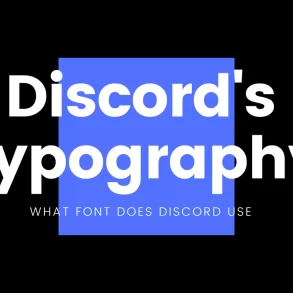In this blog, we will explore the concepts around Physical Cell ID in 4G/LTE networks and its role in the PHY layer. We will examine how the LTE radio access network assigns Cell ID, its purpose, and its relationship to other key parameters. This is an important topic for anyone working with or studying 4G/LTE systems.
The Physical Cell ID uniquely identifies each cell in an LTE network. The Downlink transmits for UES to receive during the initial cell search and selection process. During network planning, we carefully define Cell IDs to avoid collisions. Cell IDs have 504 unique values ranging from 0 to 503.
To truly grasp the concept of LTE, it is essential to have a comprehensive understanding of Cell ID. We will address its usage in critical functions such as initial access, Reselection, handover, and uplink control. As we migrate to 5G NR, the usage evolves but the physical layer identification requirement remains.
I hope this overview sparks your interest to learn more about the role and usage of Physical Cell ID in 4G/LTE networks! Please share any feedback or questions in the comments below.
Don’t forget to explore the Master Information Block (MIB) that is relevant to this category as well.
What is Video Interaction Guidance?Overview of Physical Cell ID
Physical Cell ID uniquely identifies each cell in the LTE network. It is broadcast on the Downlink so UES can search for and select the appropriate cell. The Cell ID plays a crucial role in the initial cell search process, allowing the UE to achieve synchronization and extract key information like the Master Information Block. During network deployment, we meticulously plan Cell IDs to prevent any collisions. The range of 0-503 encompasses 504 unique values. Understanding the purpose and usage of Cell ID provides important insight into the physical layer operation in LTE systems.
What is Physical Cell ID?
Physical Cell ID uniquely identifies each cell in the LTE network. It is a number between 0-503 that is broadcast by the base station on the Downlink to user equipment (UES) in the cell coverage area. The Cell ID allows UES to distinguish between different cells and is fundamental to the initial cell search and selection process when a device powers on. It is also utilized in later stages for tasks like cell Reselection and handover.
The LTE specifications mandate that Cell IDs must be carefully planned by operators to ensure no two neighboring cells have the same ID. This prevents any collisions or confusion among user devices. Proper configuration of Cell IDs during network deployment is essential for proper operation.
Which Situation is the Best Illustration of Effective Political Advocacy?Value Range and Configuration Rules
Physical Cell IDs have a limited value range from 0 to 503, allowing up to 504 unique values per LTE network. This ensures that adjacent cells do not get assigned the same ID, avoiding confusion for UES during cell selection and Reselection procedures. The specific Cell ID assigned to each base station is carefully planned by operators during initial network deployment and configuration.
When assigning Cell ID, important considerations include the geographic location of base stations, anticipated sources of interference, and the usual mobility patterns of user equipment. Maintaining the uniqueness of a Cell ID is of utmost importance. Any collisions could lead to issues with radio link failures, handover failures, or UES camping on the wrong cells. Ensuring the correct configuration of Cell IDs is essential to guarantee reliable user equipment access and seamless mobility in LTE networks. Avoiding ID collisions is crucial for this purpose.
Cell Search and Synchronization
Initial Cell Synchronization
The initial cell search procedure allows the UE to achieve synchronization with an LTE cell in the time and frequency domains. This is a crucial first step before any communication can take place.
Everything You Need to Know About Kia Finance Pay BillThe UE uses the Primary and Secondary Synchronization Signals (PSS and SSS) transmitted by the eNodeB to find the Physical Cell ID and achieve symbol timing and carrier frequency synchronization. The PSS and SSS have specific patterns that encode the Cell ID. By correlating against these known patterns, the UE can detect the Cell ID and timing parameters of the cell.
Identifying Physical Layer Cell ID
The UE can extract the Physical Cell ID by decoding the PSS and SSS once it synchronizes with the cell in time and frequency. The Physical Cell ID now identifies the physical layer’s exact cell on which the UE is camped.
The UE can subsequently decode essential system information like the Master Information Block (MIB), which is sent over the Physical Broadcast Channel (PBCH) when it knows the Cell ID. The MIB contains bandwidth, PHICH, and other key configuration details needed by the UE.
10+ Musically Alternative That Will Make You Love Music AgainInitial Cell Synchronization
The initial cell search procedure allows the UE to achieve synchronization with an LTE cell in both time and frequency domains. This process starts with the UE scanning the Downlink channels to detect the Primary and Secondary Synchronization Signals (PSS and SSS). These synchronization signals contain key parameters about the cell, including the Physical Cell ID.
Through the processing of the PSS, the UE achieves symbol timing synchronization with the cell. By extracting the Physical Cell ID, it can effectively determine the timing of the slot boundary. Using the SSS in combination with the PSS provides radio frame synchronization and frequency synchronization by indicating the cell’s transmission bandwidth.
Therefore, through reception and processing of the Downlink synchronization signals, the UE determines the exact Physical Cell ID of the cell and achieves complete time and frequency synchronization. This then allows the UE to decode essential system information like the Master Information Block to continue the cell selection process. Performing an initial cell search is an essential requirement for a UE to function properly within an LTE network.
Identifying Physical Layer Cell ID
After achieving initial synchronization with the eNB using the PSS and SSS signals to determine symbol timing and frequency, the UE can extract the Physical Cell ID from these synchronization signals. The Cell ID value acts as a unique identifier for that cell and allows the UE to decode key system information carried in the Master Information Block (MIB).
The PSS and SSS embed the Physical Cell ID value specifically based on their positioning in the radio frame and the different sequences they use. Once decoded after synchronization, the UE can map the Cell ID to the appropriate Downlink control and data channels to continue system access. So in summary, the Cell ID extraction represents a vital next step after synchronization to identify the physical layer cell before further network access proceeds.
Other Uses of Cell ID
The role of Cell ID is essential not only for initial cell selection and synchronization, but also for other important purposes. It is leveraged for mobility procedures like cell Reselection and handover as a UE moves through the network. Specifically, the Cell ID aids the UE in identifying the target cell and facilitating a smooth transition of the radio link.
Cell ID mapping is essential for determining physical layer configurations for uplink scheduling requests and control channel assignments. Moreover, this mapping plays a crucial role in ensuring efficient and seamless communication within the network. The Cell ID value determines the preambles for uplink scheduling requests. UES that request uplink grants can achieve distributed and collision-free access. Additionally, you can use the Cell ID value to derive the uplink control channel group, which simplifies control channel assignments for UES.
Cell ID is an integral part of the LTE radio protocol stack, spanning across diverse aspects. It acts as a reliable anchor for mobility and uplink access processes that need cellular identity. The adaptable physical layer design guarantees that Cell ID effectively meets a wide range of critical requirements.
Cell Reselection and Handover
The physical cell ID plays an important role in enabling cell Reselection and handover procedures in LTE networks. As a UE moves through the network, it uses the broadcasted cell ID value to help select or deselect the most appropriate cell to camp on at any given time based on signal strength and quality.
During an active call or data session, if the UE determines that a neighboring cell better suits to take over the connectivity, it can initiate a handover process. The UE uses the source and target cell IDs as part of the handshake to safely switch over to the new cell with minimal service interruption.
So in summary, the physical cell ID provides a crucial node identifier that facilitates continuous and seamless mobility on the LTE radio access network. Both idle-mode Reselection and connected-mode handovers leverage cell ID to enable this core functionality.
Uplink Scheduling and Control
The base station uses the physical cell ID to schedule uplink transmissions from UES. Specifically, it calculates the preamble sequence for the scheduling request (SR) that UES sends to request uplink resources. By tying the SR preamble to the cell ID, the base station can identify which cell the scheduling request is coming from.
In addition, the cell ID maps to uplink control channel groups. The network assigns UES to different uplink control channel groups based on the cell ID. This allows for more efficient processing of uplink control information like channel quality reports and ACK/NACK feedback for Downlink data transmissions. By leveraging the cell ID in this manner, LTE provides an efficient linkage between the physical layer cell identification and the scheduling of uplink transmissions.
Conclusion
In this blog, we covered the important functions of Physical Cell ID in 4G/LTE. We looked at how Cell ID uniquely identifies each cell, its value range and configuration rules, and its core usage in initial cell search and selection to achieve synchronization. We also discussed how Cell ID enables key functions like cell Reselection and handover, as well as uplink scheduling and control channel assignments. Clearly, understanding the Physical Cell ID concept and its implementation in LTE is critical for working with and analyzing 4G networks. As we migrate to 5G, the learnings around identification of the physical cell carry forward even as the specific techniques evolve. I hope this blog has provided a solid basis for appreciating the motivation and role of Cell ID in modern cellular systems. Please share any additional questions or feedback in the comments below.
Closing Remarks
Cell ID is a fundamental concept for cellular networks like LTE. As we migrate to 5G NR, the usage and functions will evolve but retain similarities rooted in the physical layer cell identification requirement. I hope this overview has provided a solid basis for understanding the role and usage of Physical Cell ID in 4G/LTE networks. Please share any feedback or questions in the comments section below.







